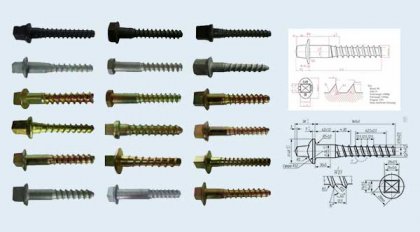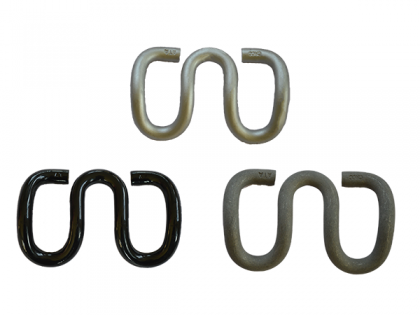Railway Fish Plate
Railway fish plate, also called rail joint or splice bar, is a metal bar connected to the ends of two railroad rails to join them together. By experience, high quality railway fish plates can effectively reduce the influence of wheels to the jointing sections of the steel rail and increase the steadiness and continuity of the train when passing through the jointing sections. As an important part of rail components, railway fish plates are widely used both in light rail and heavy rail to guarantee the safety of railroad transportation.
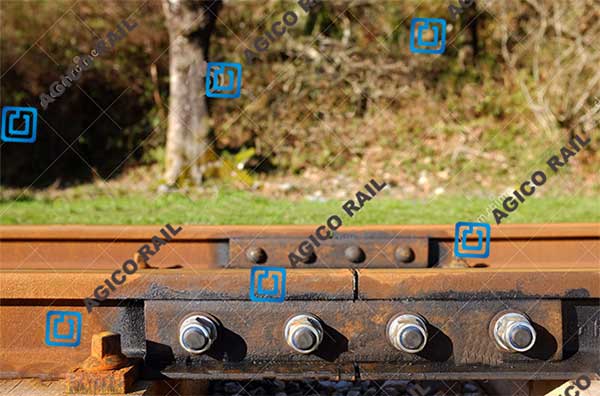
Professional railway fish plate manufacturer – AGICO Rail
With over 50 years of production experience and expertise, AGICO Rail has been the leader manufacturer and supplier of railway fish plates in China. In order to fit the necessary of modern railroad construction, AGICO Rail continuously introducing the advanced equipments and enlarging the production scales, and the rail joint productivity could be 100MTS every day.
What’s more, AGICO Rail can provide one-stop service for various types of railway fish plates including development, manufacture, and export service. It is appointed supplier of CRCC, CREC, and CCECC for contracted railway infrastructure construction projects both in China and overseas in 23 countries. We have more than 50 types of standard and nonstandard rail joint dies for global customers. We also have long-term cooperation with international companies such as A&K, ATT, InnoTrans and Vossloh.
Railway fish plates are widely used in heavy rail, light rail and crane rails, for different standards of steel rails, railway fish plates varies. We can produce more than 30 types of railway fish plates according to different standards:
- Railway fish plates for light rail: 8kg, 9kg, 12kg, 15kg, 18kg, 22kg, 24kg and 30kg
- Railway fish plates for heavy rail: 38kg, 43kg, 50kg and 60kg
- Railway fish plates for crane rail: QU70, QU80, QU100 and QU120
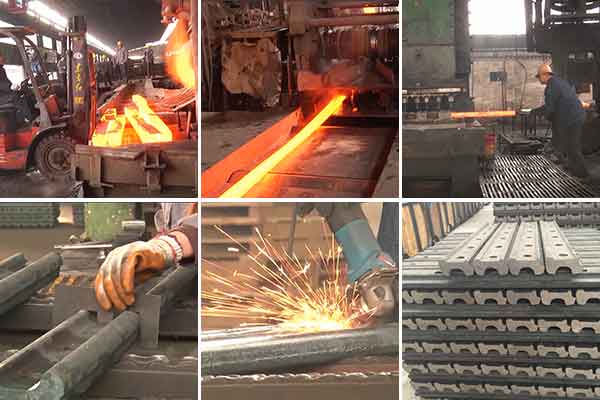
Three using types of railway fish plates
- Bolted joints
- Compromise joints
- Insulated joints
Although the performances of these three types of rail joints are not the same, they still have many similar features:
- Bolts and bars are all used and a discontinuity is created on the running surface of the rail track
- The discontinuity can accelerate track degradation around the rail joints while trains are running
International standards of railway fish plates
UIC standard railway fish plate
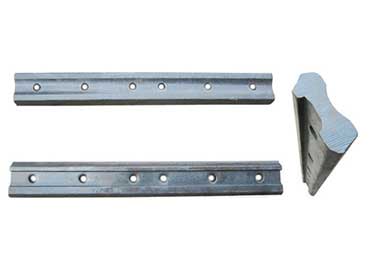
- C: 0.37~0.44
- Mn: 0.50~0.80
- Si: 0.17~0.37
- S: ≤0.035
- P: ≤0.035
| Standard | Material | Size(kg) | Tensile strength Rm | Yield strength | Elongation A | Reduction of Area Z | Brinell Hardness | Cold Bend d=3a |
|---|---|---|---|---|---|---|---|---|
| UIC864-4& UIC864-8 | Chinese steel grade 40# | U79–UIC54, U85–UIC60 | 550-650Mpa | N/A | ≥18% | N/A | N/A | N/A |
DIN standard railway fish plate
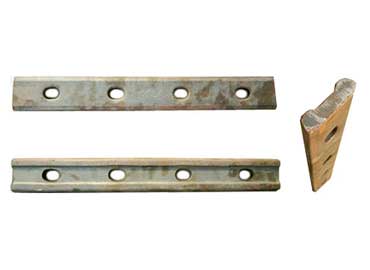
- C: 0.14~0.22, 0.52~0.60
- Mn: 0.30~0.65, 0.50~0.80
- Si: ≤0.30, 0.17~0.37
- S: ≤0.050, ≤0.035
- P: ≤0.045, ≤0.035
| Standard | Material | Size(kg) | Tensile strength Rm | Yield strength | Elongation A | Reduction of Area Z | Brinell Hardness | Cold Bend d=3a |
|---|---|---|---|---|---|---|---|---|
| DIN5902-1995 | Chinese steel grade Q235/Chinese steel grade Q295 | S30 for FL30 rail, S33 for FL33 rail, S41 for FL41 rail, S49 for FL49 rail, FL10, FL14, FL18, FL20, FL41-54 | ≥ 375 Mpa | ≥ 235 Mpa | ≥ 21% | N/A | N/A | N/A |
Chinese standard railway fish plate
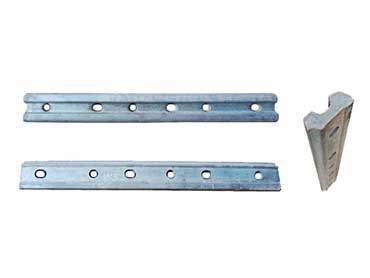
- C: 0.52~0.60
- Mn: 0.50~0.80
- Si: 0.17~0.37
- S: ≤0.035
- P: ≤0.035
| Standard | Material | Size(kg) | Tensile strength Rm | Yield strength | Elongation A | Reduction of Area Z | Brinell Hardness | Cold Bend d=3a |
|---|---|---|---|---|---|---|---|---|
| TB/T2345-2008 | Chinese steel grade 55# | 43, 52, 60, 75 | ≥ 785Mpa | ≥ 520Mpa | ≥ 9% | ≥ 20% | HBW 227-388 | 30 degree, no crack |
BS standard railway fish plate
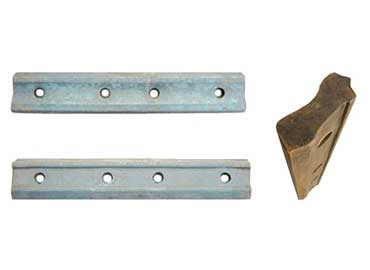
- C: 0.27~0.84
- Mn: ≤0.94
- Si: 0.38
- S: ≤0.058
- P: ≤0.058
| Standard | Material | Size(kg) | Tensile strength Rm | Yield strength | Elongation A | Reduction of Area Z | Brinell Hardness | Cold Bend d=3a |
|---|---|---|---|---|---|---|---|---|
| BS47-1 | Chinese steel grade 40# | BS75R, BS80A, BS90A, BS100A, BS113A | 550-650Mpa | N/A | ≥ 18% | N/A | N/A | N/A |
South American standard railway fish plate

| Standard | Material | Size(kg) | Tensile strength Rm | Yield strength | Elongation A | Reduction of Area Z | Brinell Hardness | Cold Bend d=3a |
|---|---|---|---|---|---|---|---|---|
| According to Customer's requirements | Chinese steel grade 50# or customized | TJ57, TJ ASCE90, TJ UIC60(Brazilian) 75LBS A.S.C.E, 75LBS BSS, 80LBS A.S.C.E, TJ BS80A(Peruvian) | N/A | N/A | N/A | N/A | N/A | N/A |
African standard railway fish plate
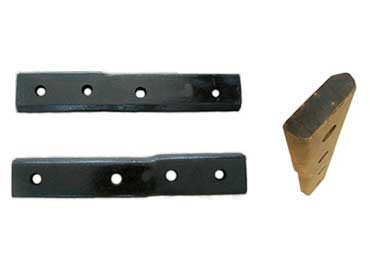
| Standard | Material | Size(kg) | Tensile strength Rm | Yield strength | Elongation A | Reduction of Area Z | Brinell Hardness | Cold Bend d=3a |
|---|---|---|---|---|---|---|---|---|
| According to Customer's requirements | Chinese steel grade 50# | 85LB, 85LB-80LB | N/A | N/A | N/A | N/A | N/A | N/A |
AREMA standard railway fish plate
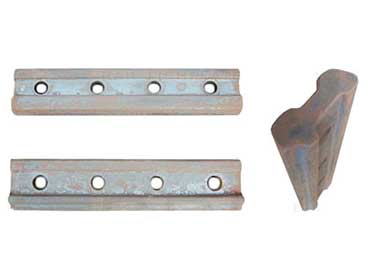
| Standard | Material | Size(kg) | Tensile strength Rm | Yield strength | Elongation A | Reduction of Area Z | Brinell Hardness | Cold Bend d=3a |
|---|---|---|---|---|---|---|---|---|
| AREMA 2007 | Chinese steel grade 50# | 115RE, 119RE, 132RE, 136RE, 141RE... | N/A | N/A | N/A | N/A | N/A | N/A |
Insulated railway fish plates introduction
In common sense, railway fish plates or rail joints are metal bars with conductivity. While in order to make the electric insulativity needs of steel rails, insulated railway fish plates are also widely used in today’s railroad construction as a new rail technology.
The insulated railway fish plates are made of thermosetting materials, with the properties of rustproof, anti-erosion, ultraviolet–proof, non-conductive and non-magnetic. These features make the insulated rail joints cannot be reprocessed and are therefore free from being stolen.
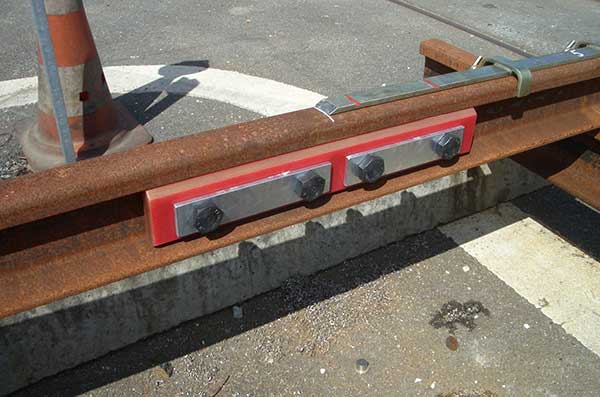
Materials for insulated railway fish plates
In today’s railroad construction, bonded insulated rail joints and polyurethane insulated rail joints are the two types widely used insulated rail joints.
Bonded insulated rail joints are mostly used to separate electric circuits in rails and turnouts. Because of widely used in continuously welded rails (CWR), the bonded insulated joints in rails must be ensured to transfer longitudinal forces arising in the rail tracks. And insulated joints can also cut in square or angular.
- Up to 60' long and ensured the specified length
- Mostly used with A-490 bolts or huck pins (6 / 8)
- Conveniently used in worn rail or transition rail configurations
- Micro alloy rail joint
The polyurethane insulated rail joints are featured to a micro alloy joint bar sections. Through ultraviolet, ozone, weathering abrasion, or the shock and flexing stresses of heavy rail traffic, it is a specially formulated compound. The dense polyurethane material bonded to the rail joints can provide superior insulation between the steel rails and the joints.
We receive enquiries in English, Español (Spanish), Русский язык (Russian), Français (French) and العربية (Arabic). Our professional team will reply to you within one business day. Please feel free to contact us!

